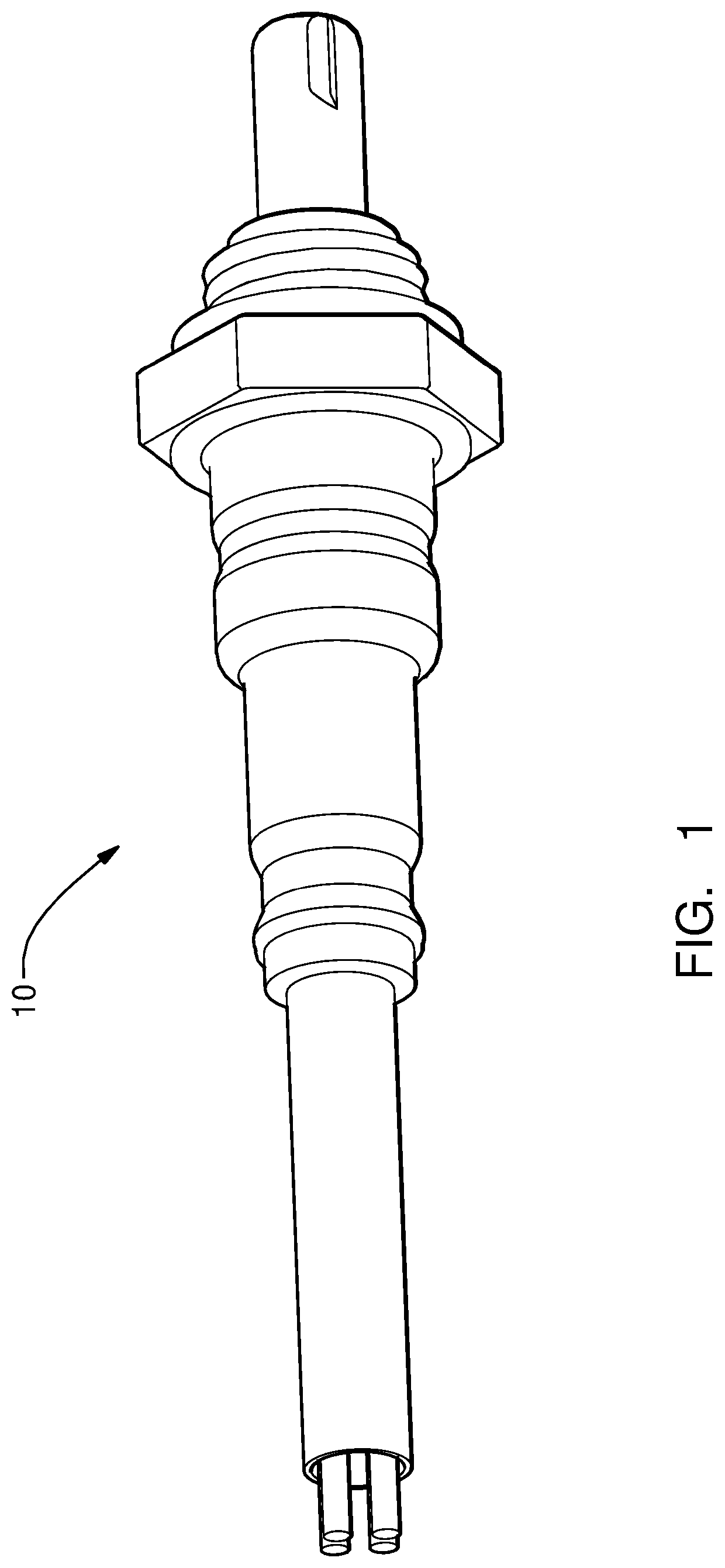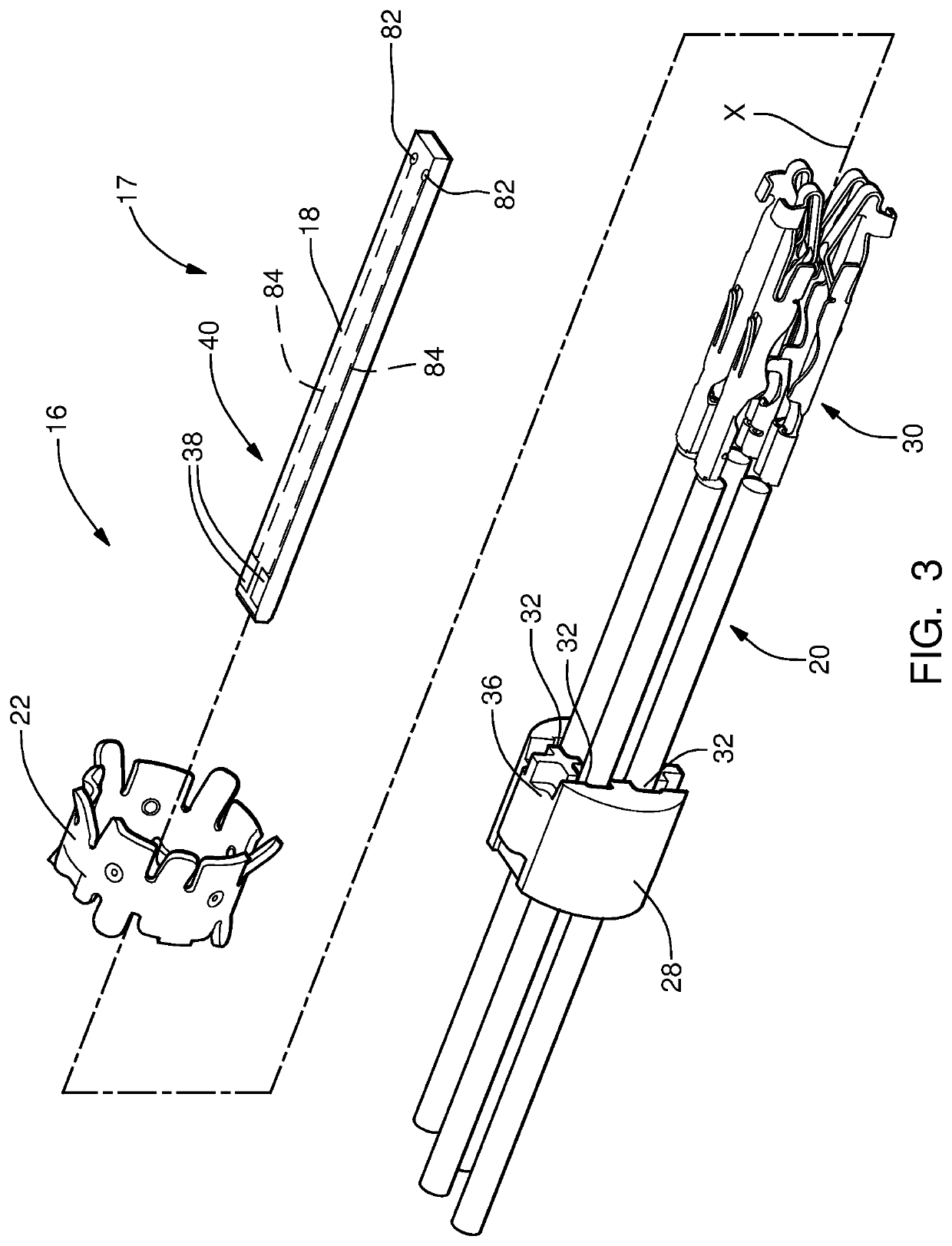Exhaust sensor with high-temperature terminal
a high-temperature terminal and exhaust sensor technology, applied in the field of exhaust sensors, can solve the problems of increasing the temperature of the interface, reducing the efficiency of the exhaust sensor, and forming oxide layers, and achieve the effect of robust electrical connection
- Summary
- Abstract
- Description
- Claims
- Application Information
AI Technical Summary
Benefits of technology
Problems solved by technology
Method used
Image
Examples
Embodiment Construction
[0021]As illustrated in FIG. 1 an exhaust sensor 10 in accordance with the present disclosure is provided for sensing constituents of exhaust gases, for example exhaust gases produced by an internal combustion engine (not shown). As shown in FIG. 2, the exhaust sensor 10 includes a front housing 12, a rear housing 14, an electrical connector assembly 16 configured to interconnect a sensing element 17 with sensing element substrate 18, which contains the exhaust sensor circuitry, to a plurality of wire cables 20, a clip 22 configured to secure the electrical connector assembly 16 within the rear housing 14, a protective sleeve 24 to protect the wire cables 20, and a gasket 26 for mounting the front housing 12.
[0022]The details of the electrical connector assembly 16, hereinafter referred to as the connector 16 are shown in FIGS. 3 and 4. The connector 16 is made up of an insulative connector body 28 and at least one mating electrically conductive terminal 30 that, when fully assemble...
PUM
| Property | Measurement | Unit |
|---|---|---|
| thickness | aaaaa | aaaaa |
| thickness | aaaaa | aaaaa |
| normal force | aaaaa | aaaaa |
Abstract
Description
Claims
Application Information
 Login to View More
Login to View More - R&D
- Intellectual Property
- Life Sciences
- Materials
- Tech Scout
- Unparalleled Data Quality
- Higher Quality Content
- 60% Fewer Hallucinations
Browse by: Latest US Patents, China's latest patents, Technical Efficacy Thesaurus, Application Domain, Technology Topic, Popular Technical Reports.
© 2025 PatSnap. All rights reserved.Legal|Privacy policy|Modern Slavery Act Transparency Statement|Sitemap|About US| Contact US: help@patsnap.com



